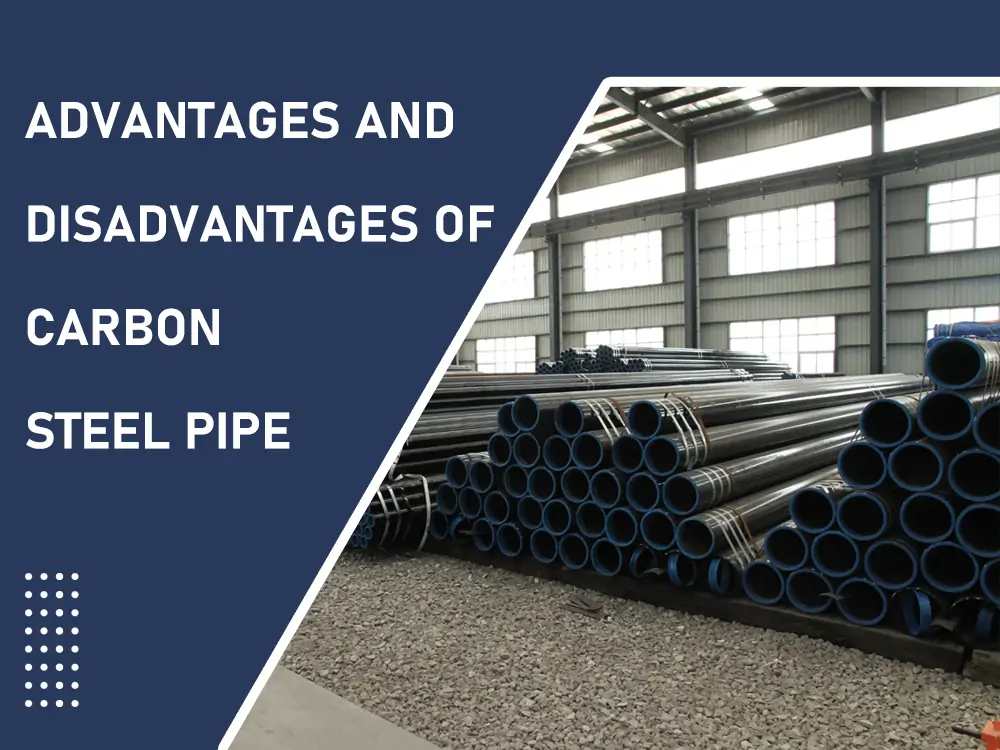
There are few pipe materials as versatile as carbon steel. Some of it stems from the simplicity of this pipe, made up of just carbon and steel. The amount of carbon, however, can make an enormous difference to the pipe’s properties. In general, carbon steel pipes contain between 0.03% to 2% carbon. The majority of the weight is comprised of steel, with trace amounts of other elements. So why is carbon steel recognized across sectors of engineering, construction, and transportation? In this article, we will answer that and compare its pros and cons.
Common Types of Carbon Steel Pipes
Since carbon steel pipe applications are numerous, they can be classified in multiple ways. The most straightforward way of describing them is by production method. Seamless carbon steel pipes are made by boring steel billets to create a hollow cross-section. While the process is time and effort-intensive, the end product is significantly robust. The other category is welded steel pipes. ERW and LSAW pipes both fall into this class. Check out the differences between ERW pipe and LSAW pipe. By utilizing metal sheets as the raw material, welded pipes offer greater versatility. They are also easily procured. Carbon steel pipes are further classified by steel grade. ASTM and API prescribe specifications that pipes in specific applications must adhere to. Some examples of graded pipes are ASTM A106 and API 5L.
Advantages of Carbon Steel Pipe
The greatest testament to the versatility of carbon steel pipe is its widespread presence in the industry. One of the biggest reasons for that is their favorable properties. While generally rigid, carbon steel pipes in the annealed state are highly machinable. Factories can obtain annealed carbon steel, work it into the desired form, and then strengthen it. Carbon steel is highly conducive to heat treatment. It is a common practice to quench or temper carbon steel to increase its hardness. The raw materials for carbon steel pipes are readily available, making them an affordable option. Due to their high load-bearing capacity, they are used in construction, engineering, shipbuilding, and bridge building.
Disadvantages of Carbon Steel Pipe
Carbon steel pipes have some inherent disadvantages with heat tools. Firstly, tools with working temperatures over 200 degrees Celsius. These can easily compromise the pipe’s wear resistance because the material can break down. Secondly, high carbon content is associated with poor welding performance. This means that welding cracks and defects are a common occurrence. The best way to reduce this is strict operational control and product inspection. In hot and humid environments, carbon steel pipes suffer from oxidation. Exposure to the environment can cause corrosion, reducing its lifespan.
Mitigating Disadvantages
Despite a few disadvantages, carbon steel is one of the best materials to work with. Here, we will discuss the various methods manufacturers employ to increase carbon steel productivity.
Protective Coatings
Where does rust first take hold of a pipe? On the surface. To protect your carbon steel pipe, the surface is the first place you must shield. Protective coatings accomplish this very task. However, their functionality doesn’t end there, as they often enhance the pipe’s appearance. For many years now, FBE (Fusion Bonded Epoxy) has been the standout coating for carbon pipes. When epoxy is heat treated, it forms a coat on the pipe surface. It firmly binds to the steel, resulting in a glossy finish. For individuals seeking low-cost protection, polyethylene is a superb coating choice. You have the option to tape or sleeve it over the pipe. Finally, let’s talk about galvanizing with zinc. It forms an oxidation layer over the pipe. The oxide ensures that corrosion does not seep into the pipe material, protecting it.
Regular Maintenance and Inspection Practices
The best way to get the most out of your pipe is to take care of it. Carbon steel pipe servicing involves defect checks, cleaning, and safety measures. Debris, dust, and waste tend to accumulate on pipes over time. Such substances have been identified as corrosive, and they can reduce lifespan. Other measures taken to safeguard pipes are corrosion inhibitors. Remove blockages and minimize exposure to humidity and water on the external surfaces. As mentioned before, protective coatings can go a long way in ensuring that pipes remain clean. Employ service professionals to inspect pipelines regularly visually. Investigative methods, such as ultrasonic and hydrostatic inspection, are excellent for intensive applications.
Choosing Appropriate Grades for Specific Environments
The vast array of carbon steel grades offers users the flexibility to optimize their choices. Selecting pipes that suit an application can drastically increase lifespan. For example, for high-temperature and high-pressure applications, ASTM A106 pipe is ideal. If you are conducting a general-purpose project, A53 will suit most of your needs. In transportation applications like oil & gas, the API 5L pipe is proven to deliver the best results. Similarly, for low-pressure applications, the A333 pipe standards provide the best balance between performance and cost.
Conclusion
If you are considering purchasing carbon steel pipes for your upcoming project, you have made an excellent choice. Its wide range of applications means that it can certainly meet your needs. That said, carbon steel pipes do have a few disadvantages. Hot working and corrosion prove to be its weak points. However, they can both be easily overcome through efficient planning and production. Ultimately, carbon steel pipes are highly versatile and procurable. These are immense benefits for any user – engineer, builder, or architect. For more information on carbon steel pipes and custom use cases, contact our professional team.
